Science Daily News | 19 Jun 2023

Views (126)

Thunderstorms and rain sweep across UK
A yellow weather warning is issued, with parts of the UK set to see up to a month's rainfall in a few hours.
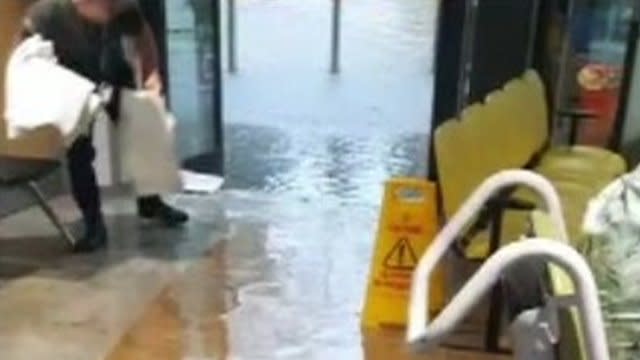
Thunderstorms, winds and hail are sweeping across the UK and could cause flash flooding, the Met Office has warned.
Warm, humid air this week has caused the storms to develop, the forecaster said.
BBC Weather's Matt Taylor said some of the worst storms could produce a month's worth of rain in a few hours.
The hot weather will continue, with temperatures reaching highs of 29C (84F) in some areas.
The entrance to the A&E department of Rotherham General Hospital was flooded on Sunday evening, as footage showed water seeping into the waiting area while a member of staff put down large paper towels on the floor to try to mop the water up.
On Sunday, yellow weather warnings were in place for thunderstorms across Wales and most of England for most of the day.
Weather warnings for rain were also in place until the evening of Sunday across northern England and the south of Scotland, due to a risk of spray and flooding.
The Met Office have issued further yellow warnings for heavy rain and the risk of flooding in the north of England a large part of Scotland for Sunday night and Monday morning.
Flooding is expected across parts of England due to the heavy rainfall on Sunday, the Met Office said, adding that Woodhouse Mill, near Sheffield, saw 35.6mm of rain between 18:00 and 19:00 BST.
Mr Taylor warned more rain was on the way, as he said: "Some parts of the UK could see over a months worth of rain fall in just a few hours today and tonight, leading to flash flooding and disruption in places.
"Due to the nature of thunderstorms, there could be huge variations in weather conditions over a short distance. Whilst some areas stay dry and humid, others close-by could experience the severe storms with torrential rain, hail and frequent lightning.
"Thundery rain will develop more widely this evening across northern and eastern England, before heading into Scotland."
However, he said that not everyone will see the storms, with conditions "highly variable over just short distances, and many areas remaining dry".
Late on Sunday, and into the night, the thundery rain could affect more of northern and eastern England, as well as eastern Scotland, he added.
The stormy forecast follows a week of high temperatures, where many parts of the UK officially experienced a heatwave.
The heatwave has caused some to experience heavy hay fever and worsened asthma attacks.
People have complained on social media that their hay fever symptoms are worse than usual this year.
Grahame Madge, a spokesperson for the Met Office, said this was a result of the hot, dry weather over the last few weeks.
"Pollen season is certainly with us," he said. "The fact we've had very dry conditions means that grasses can release pollenen masseinto the air column."
Heatwaves are becoming more likely and more extreme because of human-induced climate change.
The world has already warmed by about 1.2C since the industrial era began, and temperatures are expected to keep rising.
Despite the storms, the heat is set to continue. The highest temperature of the year so far was at Chertsey Water Works in Surrey on Saturday where highs of 32.2C were recorded.
Additional reporting by Rachel Russell.
Remembering Sally Ride — 40 years after she shattered the glass ceiling on the way to space
Sally Ride’s biographer and friend, journalist Lynn Sherr, remembers Ride’s journey as the first American woman in space and the legacy she leaves behind.
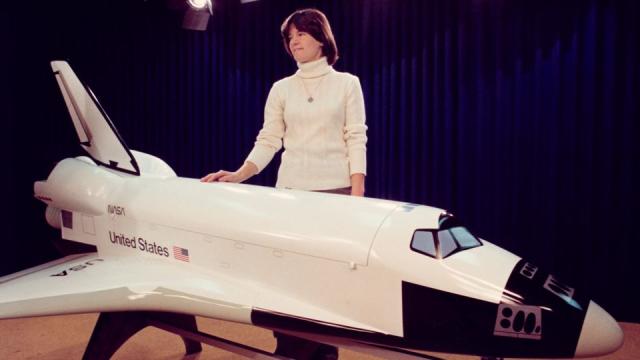
It has been 40 years since Sally Ride became the first woman from the United States to travel into outer space. June 18 marks the anniversary of Ride’s ceiling-shattering, six-day mission on the space shuttle Challenger in 1983.
The US space program was in operation for more than two decades before a female astronaut claimed a seat on a NASA rocket. During the space agency’s earliest years, officials deemed spaceflight a feat only suitable for men, and specifically, military test pilots.
Ride was also posthumously the first acknowledged gay person to become an astronaut.
But since women were first introduced to the US astronaut corps, NASA hasn’t looked back.
Ride, a physicist and astronaut, stands by the space shuttle orbiter model at NASA's Johnson Space Center during an orientation visit in Houston on January 31, 1978. - Space Frontiers/Getty Images
Ride burst onto the scene in the 1970s with her scholarly acumen, an insatiable desire to follow her interests and a demand to be treated equally despite the societal constraints that were only beginning to loosen at the time, remembers journalist Lynn Sherr, who is Ride’s biographer.
“Keep in mind — Sally was born in 1951. That was a time when outer space was science fiction, and women’s rights were almost nonexistent,” Sherr told CNN.
She remembers the bond she shared with Ride quickly deepened as a result of their shared understanding of the challenges navigating a man’s world as a woman: Ride in the astronaut corps and, before that, the field of physics, and Sherr in the largely gender-segregated field of journalism.
“She just got it,” Sherr said of Ride’s ability to navigate gender issues. “She knew how to be smart, brave, cool, work her ass off, get her job done — and do it really well.”
Ride sits with Dale Moore (right) at CAPCOM, or capsule communicator console, at Johnson Space Center mission control during the STS-2 mission in July 1981. - NASA
The biography recounts fascinating anecdotes — including the time Ride played in a mixed-doubles tennis exhibition match opposite pro legend Billie Jean King while the Rev. Martin Luther King Jr.’s sons served as ball boys. And then there was the instance when Ride traveled to Edwards Air Force Base in California to watch an early space shuttle test flight alongside King Charles III, then Prince of Wales.
CNN conducted a brief interview with Sherr in honor of the 40th anniversary of Ride’s first spaceflight.
One of the few women among hordes of male doctoral students of physics at Stanford University, Ride didn’t seriously consider a job as an astronaut until she spotted an article in The Stanford Daily about NASA recruiting women in 1977, Sherr recounted in her book.
Ride got her role as an astronaut candidate after initially mailing in an application — one of more than 8,000 people that did so. Of those, only 1,251 women were considered qualified by NASA.
“There were no female role models,” Sherr said.
The Soviet Union sent the first woman to space. Cosmonaut Valentina Tereshkova was launched into orbit in 1963. It would be two decades before the next woman would fly into space — another Soviet cosmonaut, Svetlana Savitskaya, in 1982. Ride’s first flight followed a year later.
Before NASA’s decision to allow female astronauts, in the 1960s there was pushback to the idea of women in the astronaut corps. Sherr’s book includes a copy of a letter about women’s involvement in spaceflight across which then-Vice President Lyndon B. Johnson had scrawled, “Let’s stop this now!”
But those barriers couldn’t last forever.
Ride (center) is shown with feminist and then-Ms. Magazine editor Gloria Steinem (right) and tennis star Billie Jean King (left) during a reception hosted by the Girls Club of America and Ms. Magazine in New York, August 10, 1983. - Richard Drew/AP
“When we finally realized we could do it, we could do anything,” Sherr said, referring to women. “That’s when we started kicking in the doors and getting to where we wanted to be.”
Ride was perhaps the most famous person in the country after her inaugural mission to space, but Sherr said the limelight weighed on her. Despite their closeness, Ride also hid her sexuality and even her cancer diagnosis from Sherr.
“Her mother knew she was an introvert. She didn’t want to share her personal life with the world,” Sherr said. “She wasn’t someone that wanted to say, ‘Look at me, look at what I’m doing!’ She wanted to do it, maybe get credit for it, and then she wanted to go off and do her own thing.”
Sherr only found out that Ride’s partner had been O’Shaughnessy, a fellow scientist and former tennis pro who was with her for 27 years, when Ride passed away.
Tam O'Shaughnessy (left) accepts a Presidential Medal of Freedom from former President Barack Obama (center) on behalf of Ride, her late partner, at the White House in Washington, DC, on November 20, 2013. - Kevin Dietsch/UPI/Shutterstock
“I believe — and I’m pretty sure this is right — that she did it partly to protect NASA,” Sherr said of why Ride kept her sexuality private. “She thought there were more important things to talk about.”
Ride’s ambition and love of knowledge extended far beyond her role as an astronaut, Sherr noted.
“Human exploration was not her first priority,” Sherr said. “It was taking care of planet Earth. And this was in the 1980s and ’90s — she was way ahead of her time.”
Ride sits for a presidential committee investigating the space shuttle Challenger disaster after its ill-fated launch during hearings at the State Department in Washington, DC, on February 25, 1986. - Charles Tasnadi/AP
“Do I believe Sally would have thought right now we’d be further along than we are? Yes,” Sherr said. “We have to keep doing it. We can’t have any backsliding.”
The moon, Venus, Mars and bright stars shine in a summer celestial gathering this week. Here's how to see it.
The crescent moon joins Mars, Venus and some of the brightest stars to kick off the summer 2024 skywatching season.
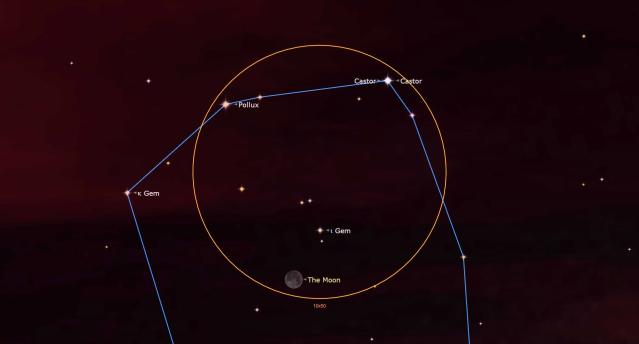
Last month, we called attention to a celestial assembly involving the moon, two bright stars and two bright planets adorning our western evening sky.
TOP TELESCOPE PICK:
Of course, once the sun has set and the sky darkens, both the moon and planet will command everyone's attention to the western sky for nearly three hours after sunset.
But Venus is not the only planet that is visible on this night.
The moon, now a fat crescent nearly five days past new phase, will form a rather wide isosceles triangle with the star Regulus and Mars.
The moon will mark the vertex angle with the "legs," measuring roughly 6 degrees, formed by the Regulus/moon and Mars/moon sides of the triangle, and Regulus and Mars separated by roughly 10 degrees marks the base of the triangle.
It would also appear that Venus is racing rapidly eastward each night and ultimately will reach the slower moving Mars. That scenario, however, will not come to pass.
Venus already arrived at its greatest angular distance east of the sun on June 4, so from our viewing perspective it is now swinging around in its orbit and is heading back in the direction of the sun. Although seemingly chasing Mars down in the evening sky, the two will never get together.
In fact, from June 19 through July 10, Mars undergoes a "quasi-conjunction" with Venus as the more brilliant world draws close but never quite catches up. A quasi-conjunction is defined as two planets approaching to within 5 degrees of each other — half the width of your clenched fist held at arm's length — without an actual conjunction in right ascension. They will appear closest together on July 1, when they will be separated by just 3.57 degrees.
Editor's Note: If you snap an image of the moon and Saturn, and would like to share it with Space.com’s readers, send your photo(s), comments, and your name and location to spacephotos@space.com.
Humans are pumping out so much groundwater that it's changing Earth's tilt
The way humans pump groundwater from the planet's interior has changed Earth's tilt by 31.5 inches (80 centimeters) between 1993 and 2010.
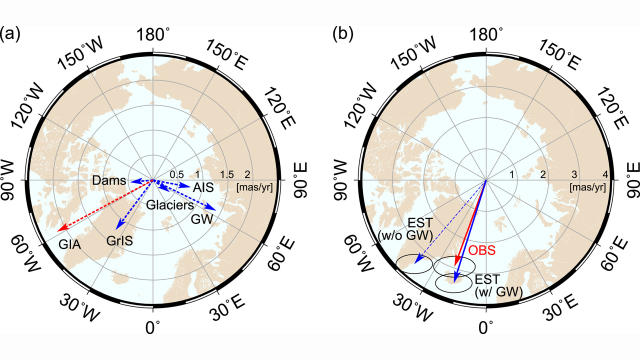
Earth's tilt has changed by 31.5 inches (80 centimeters) between 1993 and 2010 because of the amount of groundwater humans have pumped from the planet's interior.
In that period, humans removed 2,150 gigatons of water from natural reservoirs in the planet's crust. If such an amount was poured into the global ocean, its surface would rise by 0.24 inches (6 millimeters). A new study has now revealed that displacing such an enormous amount of water has had an effect on the axis around which the planet spins.
Since 2016, scientists have known that the rotational pole is affected by climate-related processes, such as the thawing of icebergs and the redistribution of the mass of the water locked in them. But until the researchers added the pumped-out water into their models, the results hadn't perfectly matched observations. Without the pumped-out groundwater, the model was off by 31 inches (78.5 centimeters).
Related stories:
"Observing changes in Earth's rotational pole is useful for understanding continent-scale water storage variations," Seo said. "Polar motion data are available from as early as the late 19th century. So, we can potentially use those data to understand continental water storage variations during the last 100 years. Were there any hydrological regime changes resulting from the warming climate? Polar motion could hold the answer."
Overall, the Earth's rotational pole shifts by several meters a year. How much drained groundwater reservoirs contribute to this shift depends on where on the planet they are located. The study showed that water removed from mid-latitudes has the largest effect on the planet's tilt.
Managing how groundwater moves around the globe could therefore help limit the shifts of the rotational pole and thus the potential climate effects that come with them.
Mothers accused of harming their babies are turning to the same science that freed Kathleen Folbigg
Kathleen Folbigg had her first child at 21, and like most new moms kept a diary of the times her baby fed, slept, burped and bathed.
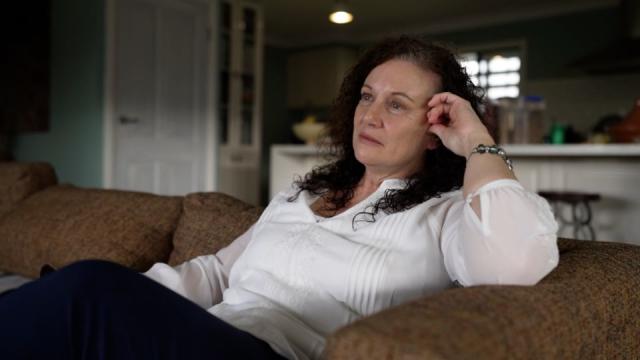
But the records stopped abruptly after 19 days when the baby died, and over the next decade until 1999, as Folbigg lost her second, third and fourth child, the guilt she felt as a “failed” mother seeped onto the page.
In 2003, Folbigg’s diaries were used as evidence that she had smothered her babies, a theory embellished by claims from prosecutors that losing four children in one family was so rare that it was almost impossible without human intervention.
At trial, Folbigg was found guilty of three counts of murder and one of manslaughter, and spent 20 years in prison before being freed by the New South Wales attorney general earlier this month.
Folbigg’s release came after scientists discovered a previously unknown mutant gene in her two daughters that could have been fatal, creating “reasonable doubt” about her convictions and grounds for a pardon.
At the same time, the case has supercharged calls for a better system of post-conviction review in Australia, so that others who claim to have been wrongly convicted don’t languish in prison for years.
“Today is a victory for science and especially truth,” Folbigg said after her release in a video filmed at a rural property in northern New South Wales, where she is recuperating before taking her case back to the Court of Criminal Appeal to have her convictions quashed.
Critics of her 2003 trial say the prosecutor twisted Folbigg’s words and relied on tropes about motherhood to convince the jury that she was fundamentally unsuited for the role and had snapped under the pressure of caring for babies.
The advances in genetic testing used to free Folbigg are giving other families hope that science may explain why their children have died, but experts say sometimes even that can’t exonerate parents – often mothers – accused of harming them.
Kathleen Folbigg is recovering from her ordeal at a property in rural New South Wales. - Obtained by CNN
Folbigg’s first baby Caleb died in 1989, followed by Patrick who died in 1991 at 8 months after suffering epileptic seizures that had left him blind. Sarah died during the night in 1993 when she was 10 months old, and finally Laura slipped away in 1999 aged 18 months.
The first three deaths were initially attributed to Sudden Infant Death Syndrome (SIDS), a term used when babies under 1 die for no apparent reason. Laura’s death was the first to raise suspicion after a forensic pathologist marked the cause as “undetermined.”
Police began investigating, and while Folbigg’s then husband Craig was initially supportive, he became convinced she had killed their babies and testified against her during a seven-week trial that found her guilty.
Emma Cunliffe, a professor at the University of British Columbia’s Allard School of Law, who started studying trials of mothers accused of murder for her PhD in 2004, says she noticed a key difference in Folbigg’s case.
“The other mothers whose cases that I set out to study had all been exonerated. Kathleen’s conviction was the only one left standing,” said Cunliffe, who made a case for Folbigg’s freedom in her 2011 book “Murder, Medicine and Motherhood.”
None of the cases had access to the genetic technology that eventually freed Folbigg, yet mothers in the United Kingdom and Canada were released after the evidence was examined by a form of post-conviction review committee that doesn’t exist in Australia.
“(Australia’s) legal system failed Kathleen Folbigg,” Cunliffe said. “We didn’t need the genetics to know that this conviction was unreliable.”
As the campaign to free Folbigg gained momentum, experts began analyzing her diaries and a very different image began to emerge of the woman presented in court as a baby killer.
One of the experts, Sharmila Betts, a clinical psychologist with decades of experience working with mothers and in child protection, analyzed the contents of her diaries in 2014.
“In the absence of conclusive medical evidence, (the prosecutor) has presented cryptic and unfathomable diary entries, which Ms Folbigg denied were confessions, as admissions of guilt, thereby dispensing of the need for more conclusive medical evidence of homicide,” she wrote in a report submitted as evidence to a recent inquiry.
Betts told CNN a woman who had lost four children would no doubt blame herself for their loss.
“If you lose one child, grief. You lose a second, you lose a third, you lose a fourth. So, there’s the accumulative grief. But there’s also, ‘what is wrong with me?’” she said. “She is blaming herself. She does think that she’s done something because no one’s explained to her what’s happened to those kids.”
In 2019, some of the world’s leading genetic experts thought they had the answer.
They had conducted whole genome sequencing on the children and their mother and found that Folbigg and her daughters, Sarah and Laura, carried a never-before-seen variant of the CALM2 gene.
CALM genes regulate the protein calmodulin, which plays an important role in regulating sodium, potassium and calcium levels for healthy heart function. Variations can cause cardiac arrhythmia, and the first sign of a problem can be sudden death.
But more crucially, scientists explained that Folbigg and her daughters carried the CALM2-G114R variant, and that while it was totally new, a similar variant had been found in an American family, where a 4-year-old boy died suddenly, and his 5-year-old sister suffered a cardiac arrest.
This time, retired judge Tom Bathurst accepted the science and recommended Folbigg’s pardon.
One of the lead authors of the study, Professor Carola Vinuesa, says that Folbigg’s case has encouraged other families and lawyers to come forward, seeking genetic evidence to clear mothers accused of harming their babies.
In those cases, not all of the children have died. Some mothers accused of injuring their children are seeking a genetic explanation for their symptoms to counter claims of child abuse, she said.
“The majority of these mothers have not harmed their children, but the children have these very rare conditions. And a few cases I’ve worked on already since the Folbigg inquiry, we’ve been able to make a genetic diagnosis. They’re very rare, so they’re not in the textbooks, you can’t find them easily,” she said.
The mothers are being accused of “medical child abuse” or “fabricated or induced illness by carers” – when carers harm otherwise healthy children or fabricate their symptoms to force hospital visits and medical tests.
Vinuesa, with the Francis Crick Institute in London, says mothers accused of medical child abuse are reluctant to talk publicly about what’s happening in case they’re perceived to be seeking attention, one of the traditional markers of Munchausen by proxy.
Professor Carola Vinuesa's team searches for variants that might explain the sudden deaths of infants. - Michael Bowles/Francis Crick Institute
One mother in the United States, who declined to be named, told CNN that she worries that if she speaks out, it’ll work against her and she could be imprisoned or lose access to her children, who have been taken from her as officials investigate the claims.
Helen Hayward-Brown, a leading expert in Munchausen by proxy, told CNN the allegation is becoming more common, and mothers are finding it more difficult to defend themselves, even when genome sequencing shows their child has a genetic illness.
“It’s really, really hard for them to defend themselves because you can have a coexisting diagnosis, as well as supposedly harming your child,” she said.
Seeming to know too much about their child’s illness, or asking too many questions can put parents, particularly mothers, in a vulnerable position, especially if they seek out other medical opinions, she said.
“Part of the profile is the mother has too much medical knowledge. She’s overly interested in the medical situation, the mother is doctor-shopping,” said Hayward-Brown, pointing out the fine line some mothers need to walk.
“If you’re a very good mother, and you care about your child, of course the first thing you’re going to do is look up what’s wrong with your child, and particularly if they’ve got a diagnosis and a rare diagnosis, you’re going to look it up immediately,” she said.
“There are a number of different support groups around now for parents of children who do have rare genetic disorders, and one of the first things they say on their websites is that a lot of these mothers are falsely accused of harming their children.”
Mothers aren’t being believed, she says, and Folbigg’s case shows that when a child dies of a rare genetic disorder before diagnosis, the results can be catastrophic.
The world has changed since Folbigg was imprisoned, well beyond advances in genetic testing.
She entered a cell the same year Concorde took its final flight, former US President George W Bush was claiming victory in Iraq, and MySpace was emerging as a new social network. The iPhone was still four years from its global launch.
On her first day of freedom, Folbigg was “bamboozled” by phones and delighted to discover video-on-demand services, her friend Tracy Chapman told reporters in a press briefing carried live on national television.
“She just wants to be able to live a life that she’s missed for the last 20 years,” said Chapman, who has created a sanctuary where Folbigg has the space to rebuild her trust in society.
“I’ve got a whole heap of rescue dogs here. We’ve got chickens and guinea pigs and rabbits. I’m a wildlife rescuer, so we’ve got a menagerie of wildlife floating around in various stages of release.
“She’ll help me with all of that because she loves animals,” Chapman said.
Tracy Chapman speaks to media during a press conference following the release of Kathleen Folbigg, in Coffs Harbour, New South Wales, June 6, 2023. - Stringer/Reuters
Bathurst, who heard the second inquiry, is yet to publish his full report, but questions are already being asked why Folbigg had to fight so hard for freedom, when women elsewhere were being released.
The Australian Academy of Science acted as an independent scientific adviser during the second inquiry to make sure the world’s leading scientists were heard. Now lawyers are taking up the fight to make it easier for the wrongly accused to seek justice.
Folbigg’s legal team and other associations, including the Law Council, the Sydney Institute of Criminology and the Australian Lawyers Alliance, say Australia needs a post-conviction review body to examine other potential miscarriages of justice.
“There are independent bodies for identifying and reviewing miscarriages of justice in the United Kingdom, Scotland, Norway, New Zealand and Canada. We are lagging behind the rest of the common law world,” said her lawyer Rhanee Rego.
Andrew Dyer, director of the Sydney Institute of Criminology, says that’s due to a lack of political will in a country where society calls for harsh punishments for people found guilty of breaking the law.
“I think the general disdain in the community for convicted offenders has a lot to do with the indifference of governments to this issue,” said Dyer, one of more than 30 legal experts who have signed a petition calling for a permanent review body.
As he announced Folbigg’s pardon, NSW Attorney General Michael Daley, told reporters that he’s “open” to discussions on potential changes to the system.
“I think we have to have a look at this case and all of the material that’s been put before Mr Bathurst, all that’s gone before us now to learn from it, and to amend the law, if needs be,” he said.
In Australia, most criminal matters are heard by state and territory-based court systems, so any national review body would require agreement between different tiers of government.
When approached about the possibility of a national criminal cases review commission, Australian Attorney General Mark Dreyfus declined to comment.
In the video released to media on June 6, Folbigg is seen arranging flowers, including the dainty white buds of Gypsophila, known as “baby’s breath.”
“For the last 20 years I have been in prison, I have forever and will always think of my children, grieve for my children, and I miss them and love them terribly,” she said.
If her children had survived, Caleb, her first born, would be 34, and the last born, Laura, 25.
Perhaps they might have had their own children by now, and at 56, Folbigg would have been a grandmother.
Chapman said of her friend’s traumatic experience: “If it doesn’t make us better human beings, or humane beings, I’ll be just devastated.”
“The worst thing for both of us is that this could happen to someone else.”
SpaceX launches SATRIA-1 communications satellite for Indonesia, lands rocket at sea (video)
SpaceX launched a new Indonesian communications satellite into orbit from Florida on Sunday (June 18) and capped the flight with a flawless rocket landing at sea.
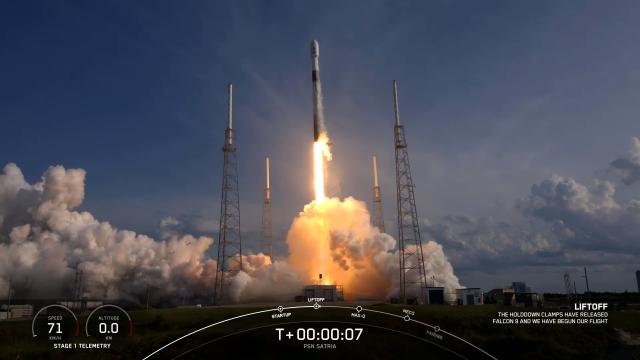
SpaceX launched a new Indonesian communications satellite into orbit from Florida on Sunday (June 18) and capped the flight with a flawless rocket landing at sea.
The Falcon 9's upper stage, meanwhile, continued carrying SATRIA-1 to geosynchronous transfer orbit, ultimately deploying the satellite there just under 37 minutes after liftoff.
SATRIA-1 (whose name is short for "Satellite of the Republic of Indonesia") will be operated for the Indonesian government by the Indonesian company PSN.
RELATED STORIES:
"SATRIA-1 will have a throughput capacity of 150 billion bits per second, three times the capacity of the nine telecommunication satellites that Indonesia currently uses," the outlet added.
0 Likes
